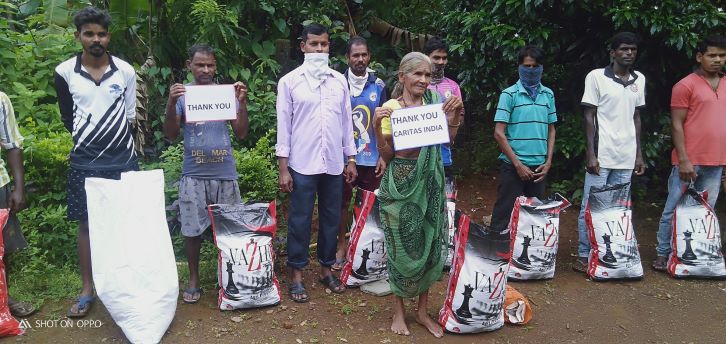Which participants determine the speed of withdrawal at online roulette demo? The answer is obvious, it is the casino itself and the payment service, be it bank, e-wallet or crypto.
Flood took everything away from us but Caritas India gave back smile
Rampant urbanization in the Vasai-Virar belt has made it more prone to floods over the last decade, a study conducted by students of Kamla Raheja Vidyanidhi Institute of Architecture (KRVIA) shows. The study highlighted that between 2004 and 2019 the share of urban areas went up from 12% to 20% in the 380 sq.km. region. The study showed that the increased concretization resulted in cutting-off of natural streams originating from the hills on the east and flowing towards the coast. These streams functioned as a natural source of drainage to run-off water during monsoons.
In July 2019, large parts of Vasai and Virar were submerged for a week following heavy rains. The city was cut-off from other parts of the State and Gujarat as there was severe waterlogging on the tracks. Railway officials said there was a drainage issue as water levels did not recede even after the rain stopped. Incessant rain for three days led to a flood-like situation in Vasai and Virar in July 2020.
The dams released a lot of water and the rivers are already full. As there is no buffer zone near the rivers, the water has flooded houses. Even in urban areas farther from the river, the drains have been overflowing as they connect to rivers or creeks, leading to flooding. When Barvi dam started overflowing on Sunday evening, Modak Sagar dam had already released 1.10 lakh cusec water in Vaitarna river. While 45,000 cusecs were released from Kavdas dam, Dhamani released 23,000 cusecs and Tansa 42,000 cusec.
Urban areas like Thane and Boisar also saw life coming to a standstill after the drains started throwing water on the roads. In Palghar, Pinjal river overflowed on to the roads, breaking vehicular connections between Palghar and Jawhar, Mokhada, Vikramgad and Wada tehsils. The bridge between Wada and Palghar was broken… Several villages have gone underwater.
In this situation the staff and Director of Vasai Janhit Trust Fr. Francis Dabre has reached to the tribal villages and access the situation of the people. More than 200 houses were underwater and the situation of the old people was very pitiful. The food grains which they have stocked for next year was underwater. Their grocery and clothes were fully wet. The coordination committee meeting was held, and an action plan was made by the committee sharing the responsibility.
The Vasai Janhit Trust immediate plan to give food and hygiene assistance to the flood-affected families with the support of Caritas India. The food kit and hygiene kit were arranged and distributed to the 200 tribal families of Dahanu and Talasari area. The local Gram panchayat members and village volunteers have helped the VJT during the distribution of food and hygiene kit. Archbishop Felix Machado has taken a keen interest and regular monitoring on the distribution of food kits and hygiene kit programme.
The people from the tribal area were very happy as they received help on the time when they need badly. The Vasai Janhit Trust with local NGO Adivasi Vikas Sanstha- Shilonda and Caritas India worked in close collaboration and reached to the affected families on time. The smile of the people was expressing the same on their face.
When we were giving 25 kg. ration and some other goods, people thanked us emotionally and said that in case of any crisis, the Caritas India and other local organizations rushed to our aid. Thank you very much to Caritas India for giving us a helping hand in the crisis said, Archbishop Felix Machado.
Copyright Caritas India 2013 ! Developed by Neural Info Solutions Pvt. Ltd.

















































